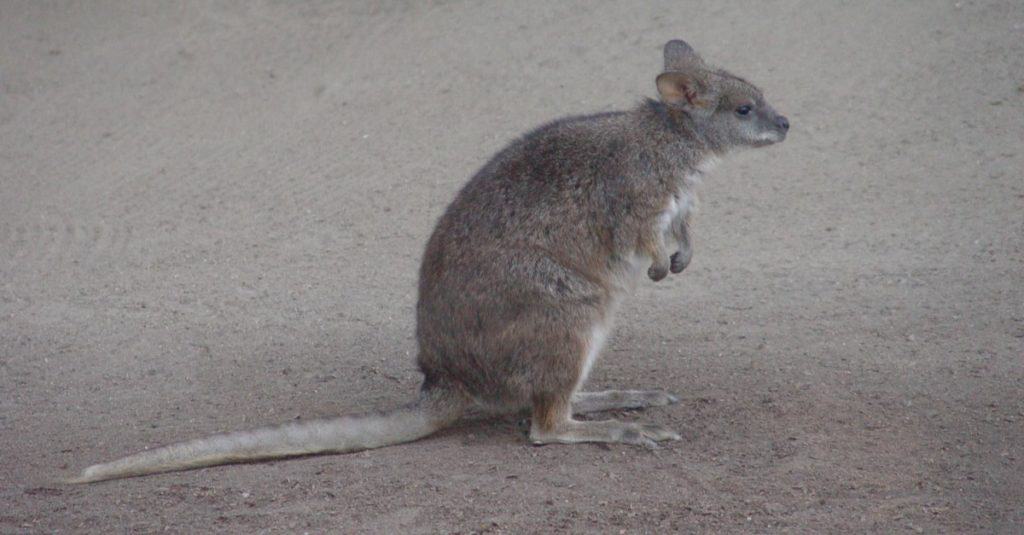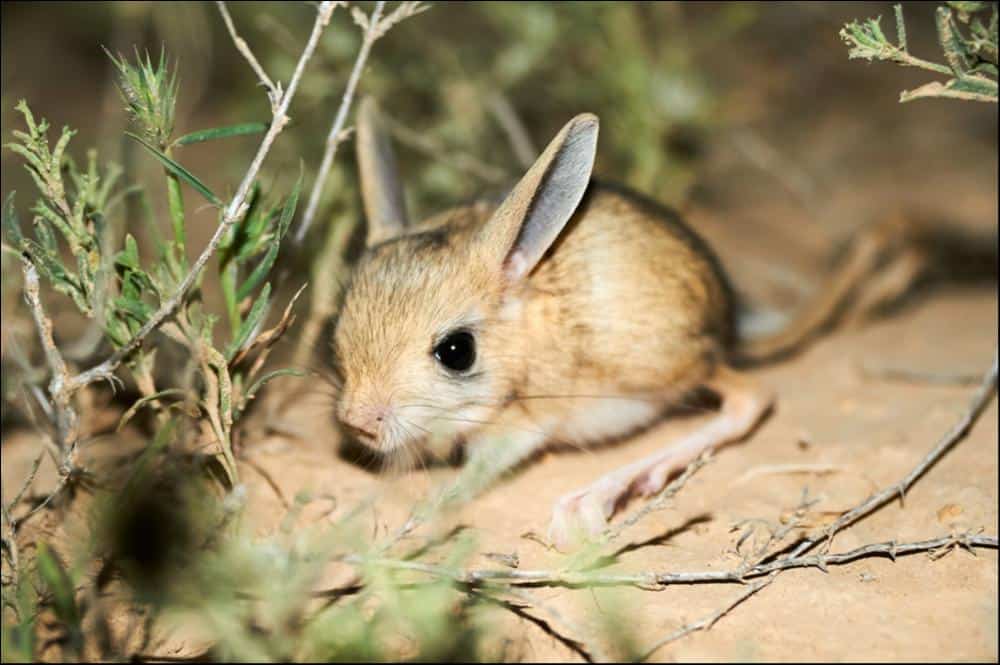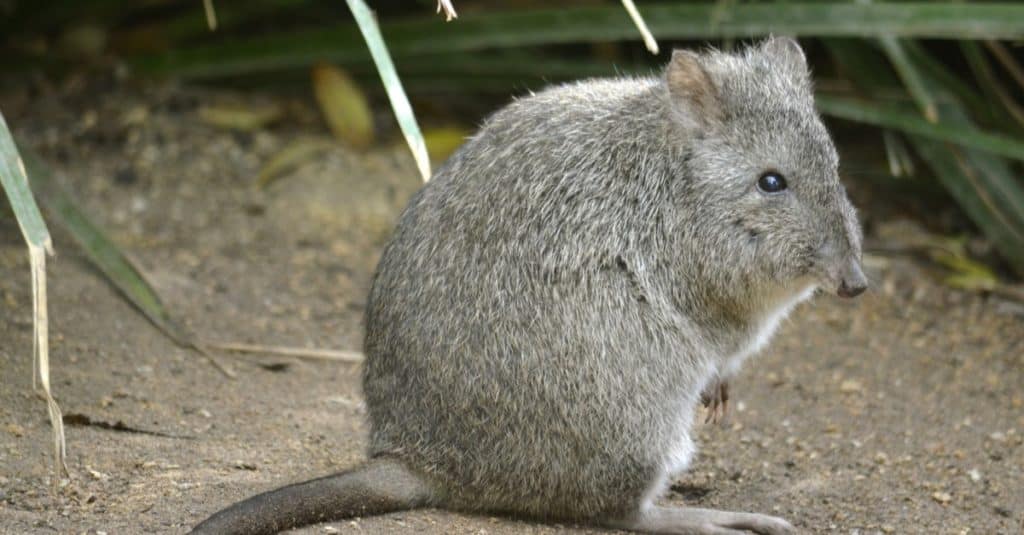Jerboas and kangaroo rats evolved in different places on the planet but adapted to living comfortably in deserts and fleeing predators swiftly thanks to their strong, springy hind legs. Strangely, jerboas and kangaroo rats are proportioned creatures that look like a pint-sized hybrid between a kangaroo and a typical mouse. These tiny animals navigate their dry habitats using only their two hind legs to hop, skip, and jump.
Despite not being in the same rodent family, the expanded rear and decreased front legs and even the color pattern of the jerboa and the kangaroo rat can be identical. But how do you tell them apart? This article discusses the main differences between the jerboa and kangaroo rat.
Comparing a Jerboa and a Kangaroo Rat
Key Differences Between a Jerboa and a Kangaroo Rat
The key differences between a jerboa and a kangaroo rat are their classification, appearance, and burrowing and hibernation habits. Despite their small size, kangaroo rats are slightly larger than jerboas. Kangaroo rats are medium-sized, weighing 35 to 180 grams, with a body length of 10 to 20 cm (4 to 8 inches) and a tail of the same length. On the other hand, jerboas have mouse-like bodies that range in length from 5 to 15 cm (2 to 5.9 inches) and lengthy tails that range from 7 to 25 cm (2.7 to 9.8 inches).
Let’s take a closer look at each distinction to help differentiate between the two species.
Jerboa vs. Kangaroo Rat: Classification
Members of the 33 jerboa species belong to five subfamilies under the family Dipodidae, consisting of birch mice and jumping mice. The family Dipodidae gets its name from the Greek words “di,” which means “two,” and “podos,” which means “foot,” because their limbs are so short that they appear to have only two hind feet. The jerboa’s evolutionary history may be traced back to the Middle Miocene Epoch (16.4 million to 11.2 million years ago) in North Africa and Asia.
One of the more intriguing kangaroo rat facts is that, contrary to its name and appearance, the creature is neither a rat nor a mouse; the pocket gopher is its closest relative. Kangaroo rats are classified within the order Rodentia in the family Heteromyidae (Greek for “other mice” or “different mice”) rather than the “true” mice (family Muridae). The kangaroo rat’s evolutionary history began in North America during the Late Miocene Epoch (11.2 million to 5.3 million years ago).
Jerboa vs. Kangaroo Rat: Appearance

Brian L. Hendricks/Shutterstock.com
Jerboas are animals that have a reputation for being both adorable and tough. These tiny desert rodents use their long, cat-like whiskers to navigate their habitats. As the name suggests, the long-eared jerboa has significantly longer ears than other species of this rodent!
Meanwhile, kangaroo rats have powerful rear legs that allow them to jump their own body length many times. Their tails, used for balance, are tufted and longer than the rest of the animal’s body, giving them the moniker “kangaroo rat.” Compared to jerboas, the most distinct feature of these critters is that they have fur-lined cheek pouches, and the rodents fill these pouches with seeds and place them in caches scattered around their territory.
Jerboa vs. Kangaroo Rat: Burrowing Habits

A fascinating fact about jerboas is that they have many burrows they cycle through depending on the specific time of year. They will dig two “permanent” burrows to serve as their summer and winter homes, and they will also dig temporary tunnels when out hunting. Jerboas spend the day in burrows and emerge at night to scavenge for seeds, succulent plant parts, and insects. Some species seal their burrow entrances with soil to conserve moisture and keep heated air out.
Kangaroo rats dwell in burrows beneath the desert’s sand or soft dirt. Each burrow has only one adult. They spend the hottest time of the day in these burrows and only emerge at night to forage. Staying the entire day in their burrow allows them to preserve water and avoid predators. Like apartments, the burrows feature separate rooms for different activities, such as sleeping, and some kangaroo rats mate in their burrows.
Jerboa vs. Kangaroo Rat: Hibernation

Susan Flashman/Shutterstock.com
Jerboas hibernate in the winter; thus, their winter burrows are designed to be as warm and safe as possible. When they emerge from their winter slumber, mating season begins. Jerboas are believed to be polygynous, which means that a single male will frequently mate with numerous females, but females will only mate with one male. Researchers do not know for certain, but many closely related animals behave this way; therefore, it is likely.
One explanation why jerboas hibernate whereas kangaroo rats do not is that jerboas do not stockpile their food like kangaroo rats do. Kangaroo rats can consume saved seeds during the winter. Jerboas cannot eat hard seeds; they consume insects, grass, and mushrooms.
Up Next:
Mouse vs Rat: 5 Main Differences Explained
The 10 Most Amazing Desert Animals
9 Smallest Rodents in the World
The post Jerboa vs Kangaroo Rat: What are their Differences? appeared first on AZ Animals.
from Animal News, Facts, Rankings, and More! - AZ Animals https://ift.tt/7t32yeq